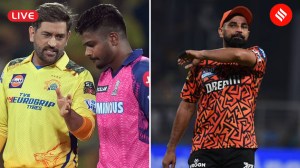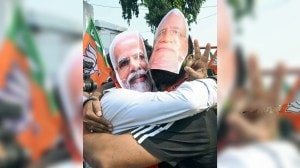Aussies drop Bevan, a lesson for Indians
If the Indian cricket establishment really wants to overtake the Australians as the Number 1 team, it should switch focus from batting and b...

If the Indian cricket establishment really wants to overtake the Australians as the Number 1 team, it should switch focus from batting and bowling strategies and look, for a while, at simple man management. While we debate endlessly over a missed double century and a rookie Test player’s berth, they have gone and dumped their best one-day player.
With a batting average of 53.58, Michael Bevan could have reasonably assumed he was a shoo-in to the national ODI team. Yet the man considered arguably the most complete one-day player ever has — along with Andy Bichel — not been offered a contract by Cricket Australia (CA) for the season ahead, effectively ending his international career.
So we have one cricketing system that doesn’t think twice before putting team/national interest before emotion. And another that still considers reputations biggest. Maybe the comparative success/failure rates of the two sides can be an indicator to which is a more correct way to be.
What would have counted against Bevan is that, after a succession of injuries, his shoulder is a mess, meaning he can’t bowl his chinamen anymore and his throwing arm isn’t what it used to be.
Announcing the decision, CA chief Trevor Hohns said, ‘‘It was felt that Bevan’s contribution to the one-day arena has decreased. We are looking to the future now…’’
Despite the decrease, he has averaged 44.00 for the last 30 ODIs. Much lower than his career average but still far higher than anyone in the Indian batting line-up bar Tendulkar (44.82). Ganguly is next with 42.12, followed by Dravid’s 39.40. India’s ‘finishers’ Yuvraj Singh and Mohammed Kaif come far lower at 30.72 and 31.21 respectively.
One of the most difficult decisions faced by any team management is deciding when a player’s career should end. Especially someone who’s rendered great service. The Australians have a two-pronged formula to run their team: Keep youngsters out until there is a vacancy. And retire an old-timer when the stats go against him. How would Team India tackle the same situation? It’s not as hypothetical a question as it sounds, because we have faced them, and have dealt with them in one constant way: If he is a big player with a following, keep him in the team. He could go a season averaging under 20, but no sweat; ‘‘How can we drop him?’’ is the answer.
To some extent, all personnel decisions in Indian cricket have financial implications: imagine, for example, the fallout in terms of sponsorships if Yuvraj becomes a Test regular. That clouds judgement and softens emotions, making it tough to take hard decisions.
But if India can’t emulate Australia in terms of retiring players, it should with regard to preserving bench strength. There is currently a debate over Yuvraj’s inclusion in the team. As this paper noted on Tuesday, the Aussie way would have been to tell Yuvraj he’d played his role to perfection, now it’s time to return to the bench.
That’s the way they’ve done it with players like Bichel, MacGill, Lehmann and Katich. Each has been made to sit and wait their turn.
Meanwhile, farewell to Bevan.



- 01
- 02
- 03
- 04
- 05



























